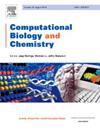Multi-omics data integration and analysis pipeline for precision medicine: Systematic review
IF 2.6
4区 生物学
Q2 BIOLOGY
引用次数: 0
Abstract
Precision medicine has gained considerable popularity since the "one-size-fits-all" approach did not seem very effective or reflective of the complexity of the human body. Subsequently, since single-omics does not reflect the complexity of the human body’s inner workings, it did not result in the expected advancement in the medical field. Therefore, the multi-omics approach has emerged. The multi-omics approach involves integrating data from different omics technologies, such as DNA sequencing, RNA sequencing, mass spectrometry, and others, using computational methods and then analyzing the integrated result for different downstream analysis applications such as survival analysis, cancer classification, or biomarker identification. Most of the recent reviews were constrained to discussing one aspect of the multi-omics analysis pipeline, such as the dimensionality reduction step, the integration methods, or the interpretability aspect; however, very few provide a comprehensive review of every step of the analysis. This study aims to give an overview of the multi-omics analysis pipeline, starting with the most popular multi-omics databases used in recent literature, dimensionality reduction techniques, details the different types of data integration techniques and their downstream analysis applications, describes the most commonly used evaluation metrics, highlights the importance of model interpretability, and lastly discusses the challenges and potential future work for multi-omics data integration in precision medicine.
精准医疗的多组学数据整合与分析管道:系统综述。
由于 "千篇一律 "的方法似乎并不十分有效,也不能反映人体的复杂性,精准医疗因此大受欢迎。随后,由于单一组学无法反映人体内部运作的复杂性,也就无法在医学领域取得预期的进步。因此,多组学方法应运而生。多组学方法包括利用计算方法整合来自不同组学技术(如 DNA 测序、RNA 测序、质谱分析等)的数据,然后将整合结果用于不同的下游分析应用,如生存分析、癌症分类或生物标记物鉴定。近期的大多数综述都局限于讨论多组学分析管道的一个方面,如降维步骤、整合方法或可解释性方面;然而,很少有综述对分析的每一个步骤进行全面评述。本研究旨在概述多组学分析流水线,从近期文献中最常用的多组学数据库、降维技术入手,详细介绍不同类型的数据整合技术及其下游分析应用,描述最常用的评估指标,强调模型可解释性的重要性,最后讨论精准医疗中多组学数据整合面临的挑战和未来可能开展的工作。
本文章由计算机程序翻译,如有差异,请以英文原文为准。
求助全文
约1分钟内获得全文
求助全文
来源期刊

Computational Biology and Chemistry
生物-计算机:跨学科应用
CiteScore
6.10
自引率
3.20%
发文量
142
审稿时长
24 days
期刊介绍:
Computational Biology and Chemistry publishes original research papers and review articles in all areas of computational life sciences. High quality research contributions with a major computational component in the areas of nucleic acid and protein sequence research, molecular evolution, molecular genetics (functional genomics and proteomics), theory and practice of either biology-specific or chemical-biology-specific modeling, and structural biology of nucleic acids and proteins are particularly welcome. Exceptionally high quality research work in bioinformatics, systems biology, ecology, computational pharmacology, metabolism, biomedical engineering, epidemiology, and statistical genetics will also be considered.
Given their inherent uncertainty, protein modeling and molecular docking studies should be thoroughly validated. In the absence of experimental results for validation, the use of molecular dynamics simulations along with detailed free energy calculations, for example, should be used as complementary techniques to support the major conclusions. Submissions of premature modeling exercises without additional biological insights will not be considered.
Review articles will generally be commissioned by the editors and should not be submitted to the journal without explicit invitation. However prospective authors are welcome to send a brief (one to three pages) synopsis, which will be evaluated by the editors.
 求助内容:
求助内容: 应助结果提醒方式:
应助结果提醒方式:


